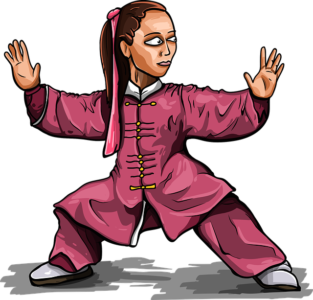Beginning:
Low intensity exercises provides a rich tapestry of opportunities, varying styles, and intensities for each thread.
It has a subtle yet potent allure that merits acknowledgment, even though the hype around high-intensity workouts frequently takes center stage.
Think of a relaxed bike ride through your neighborhood, a yoga class at sunrise, or a leisurely walk in the park—these activities encourage you to move without feeling the need to push yourself.
Low intensity exercises are a fun diversion from the daily grind, enabling your body to rest and recover while providing fantastic health benefits.
This easy exercise can change your day, whether your goal is to improve your mood, give you more energy, or include more movement into your daily routine.
Accept the peace and happiness of low-intensity exercise and learn how it may unexpectedly improve your life!
In this article, we will review 7 unique and highly effective low intensity exercises, highlighting their specific benefits and offering expert advice on how to embark on each journey.
These exercises are not only user-friendly but also help individuals of all ages and fitness levels, making them a go-to option for anyone looking to embrace a more active lifestyle without the intimidation of high-impact training.
Let’s explore how you can get started on this rewarding path!
What Is Low Intensity Exercise?
Low intensity exercises are physical activities that raise your heart rate to about 50–65% of your maximum heart rate.
These activities are slow-paced and less physically demanding, allowing you to maintain effort for more extended periods without excessive strain.
You should be able to converse while engaging in these workouts—a good indicator of low intensity.
Low intensity workouts are moderate and perfect for beginners, retirees, or anybody managing injuries or chronic health conditions, in contrast to high-intensity training, when you frequently gasp for air.
Walking, mild cycling, and yoga are examples of activities that offer substantial health advantages without putting one in danger of overexertion.
Let us now examine 7 low intensity exercises that can improve your health.
7 Low Intensity Exercise For A Better Health.
1. Walking at a Comfortable Pace. 
Walking is one of the most versatile and accessible low-intensity exercises.
Whether you stroll around your neighborhood or walk on a treadmill, this activity strengthens your legs, improves cardiovascular health, and boosts mood.
How to Get Started
- Begin with a short 15–20 minute walk, gradually increasing to 30–60 minutes per session.
- Aim for at least 150 minutes of walking each week.
- Use comfortable footwear to support your joints.
Benefits
Walking can help you keep a healthy weight, lower your blood pressure, manage stress, and lower your risk of chronic diseases. The research highlighted by Healthline supports its role in enhancing general well-being and promoting a longer life.
For more details on building healthy habits through walking, check related guides on TrendiFacts.
2. Light Jogging.
 Light jogging introduces a low-impact cardio option that burns calories and strengthens the heart while stabilizing physical intensity.
Light jogging introduces a low-impact cardio option that burns calories and strengthens the heart while stabilizing physical intensity.
It’s a step up from walking and perfect for those wanting more variety.
How to Get Started
- To start, spend 20 to 30 minutes alternating between walking and jogging. To establish a well-rounded habit, switch between the two pursuits.
- Maintain a steady pace where you can talk without getting breathless.
Benefits
Jogging helps people lose weight, improve circulation, and build stronger leg muscles. According to WebMD, it also stimulates endorphins to improve mood and energy.
3. Cycling at a Casual Pace.
Cycling is a fun, joint-friendly activity that combines fitness with exploration.
Whether outdoors or on a stationary bike, consistent cycling improves strength, balance, and endurance.
How to Get Started
- Aim for 30–60 minutes of easy cycling twice to thrice weekly.
- Use a comfortable bike that suits your height and posture.
Benefits:
Cycling can help people lose weight, strengthen their hearts, and possibly lessen their anxiety symptoms.
When cycling outdoors, remember to pace yourself and carry the appropriate safety equipment.
Explore tips for cycling beginners on TrendiFacts.
4. Swimming.
Swimming is a full-body workout that is incredibly effective while remaining gentle on the joints. It engages multiple muscle groups, builds endurance, and improves flexibility.
How to Get Started
- Spend 20–30 minutes swimming laps at a relaxed pace.
- Beginners can join aqua aerobics classes or practice in a shallow pool section.
Benefits
Swimming improves cardiovascular health, develops muscles, and eases stiff joints.
Research featured on Livestrong highlights swimming’s benefits, particularly for those recovering from injuries.
5. Yoga.
 Yoga combines gentle physical movements, breathing techniques, and mindfulness.
Yoga combines gentle physical movements, breathing techniques, and mindfulness.
It’s popular for enhancing flexibility, balance, and mental clarity.
How to Get Started
- Join local yoga classes or follow online tutorials tailored for beginners.
- Practice for 20–30 minutes, focusing on proper form and breathing.
Benefits
Yoga improves posture, lowers stress, and increases mindfulness in general.
Studies reviewed on St. Luke’s Health also suggest yoga helps manage chronic back pain and mental fatigue.
6. Tai Chi.
Tai Chi is an ancient Chinese practice involving slow, precise movements to improve balance, relaxation, and coordination. 
Sometimes called “meditation in motion,” it is ideal for seniors and those with mobility challenges.
How to Get Started
- Look for beginner Tai Chi classes locally or online.
- Start with 10–20 minutes per session, focusing on executing movements with control.
Benefits
According to Healthline, Tai Chi is excellent for reducing the risk of falls, improving sleep quality, and supporting mental health.
It’s a great way to integrate mindfulness into your fitness routine.
7. Low Intensity Strength Training.
Gentle resistance exercises using light weights, resistance bands, or body weight can enhance muscle tone while avoiding strain.
Movements like squats, lunges, or bicep curls are adaptable for every fitness level.
How to Get Started
- Perform basic movements using 1–5 lb weights or resistance bands.
- Begin with one to two sessions per week, increasing frequency gradually.
Benefits:
Low-intensity strength training is practical for building bone density, improving metabolism, and maintaining lean body mass as you age.
Experts featured on WebMD suggest incorporating resistance exercises into a balanced fitness plan.
Benefits of Low Intensity Exercise
Low intensity workouts offer tremendous benefits, including:
- Enhanced Cardiovascular Health
- These exercises boost heart function and blood circulation without overstressing the body.
- Improved Mental Health
- Regular activity eases stress, enhances mood, and reduces symptoms of depression and anxiety.
- Reduced Risk of Chronic Diseases
- Low intensity exercises play a key role in managing diabetes, arthritis, and other chronic illnesses.
- Safe for All Ages and Abilities.
- Whether you’re a beginner recovering from injury or an older adult, these workouts are universally accessible.
- Better Adherence
- Research shows people stick to low-intensity routines more consistently due to their enjoyability and lower injury risk.
Expert Tips to Maximize Your Routine
- Start at Your Current Fitness Level: Take your time with extended sessions. Gradually build stamina and strength.
- Maintain Consistency: Regularity matters more than intensity. Aim for small, achievable goals.
- Use Proper Gear: Invest in supportive shoes, comfortable clothing, and, if necessary, exercise equipment.
- Stay Hydrated: Drink plenty of water before, during, and after workouts.
- Consult Your Doctor: If you have pre-existing conditions, seek professional advice to tailor your exercise routine.
To master fitness consistency, visit related reads on Fitness goal techniques.
FAQs About Low Intensity Exercise
Q: What qualifies as low intensity exercise?
Low intensity exercises involve activities that keep your heart rate at 50–65% of its maximum.
You should feel slightly exerted but still able to hold a conversation.
Q: Are low-intensity workouts effective for weight loss?
Yes, they can support weight loss when paired with a healthy diet. While calorie burn is slower, sustainable consistency makes a significant impact.
Q: How often should I do low-intensity exercises?
As health experts recommend, aim for at least 150 minutes of low-intensity exercise per week.
Q: Can beginners start with low intensity exercise?
Absolutely! These exercises are ideal for anyone new to fitness or managing physical limitations.
Q: Can I combine low and high-intensity workouts?
Yes! Incorporating both into your weekly routine adds variety and ensures balanced fitness. Use low-intensity days for active recovery.
Q: How is low intensity different from low impact?
Conclusion:
Low intensity focuses on less strenuous effort, while low impact specifically limits joint pressure.
Some exercises, like yoga, are both low intensity and low impact.
Low intensity exercise provides enjoyable and practical methods for enhancing your health and energy levels while keeping you active.
Whether you’re beginning your fitness journey or seeking to manage chronic issues, these workouts can gradually but significantly improve your overall well-being.


